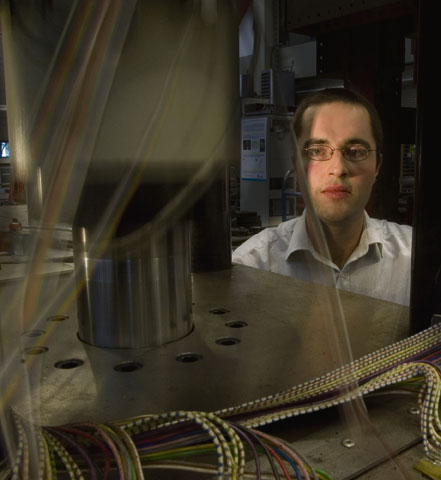My work on very high strength steels will help make this possible.
This steel is three to five times stronger than regular steel. Or, I should say, the yield strength is much higher. This means that if you try to stretch the metal, you need to use enormous force to actually deform the steel.
Compare it with an elastic. If you slightly pull on it, you stretch it, but it will regain its original shape and size once released. If you pull very hard though, the fibers inside the material start moving, causing a plastic deformation that elongates the elastic. The same can happen with steel.
The best ways to use very high strength steel are not yet known. Apart from a few cranes in the Netherlands, it has not been used in engineering structures. The goal of my PhD research, which I’m pursuing at the Materials Innovation institute (M2i), is to set up design and fabrication recommendations.
The problem with the steel is that, although it’s so strong, there are lots of weak spots in structures made out of it. Due to notches inside the material, it is sensitive to fatigue. And in a welded structure there are always places where, due to the geometry, tension concentrates. Often these so called stress concentrations are situated at joints where tubes are welded together.
If these points are very weak, there is no point in using very high strength steels. But these weak points can be solved by using cast elements at the joints and by welding the tubes to these castings.
We are going to test the strength of a welded truss consisting of tubes connected through cast joints. This is the kind of construction you can see in cranes or bridges. We will press on it dynamically with 500 tons, the equivalent of 500 cars, with a frequency of once every second. It’s a huge set up and it might take weeks before the first cracks appear.
I really like this work. By pressing and pulling with enormous force you get to understand what goes on inside the material.
When I first started in the lab, I once ruined a sample by pressing on it instead of pulling at it. Such things can be very stressful. Luckily, I can work off my emotions by playing trombone. I think everyone needs good music in order to work well.”
“Ik heb nu al twee weken hetzelfde pakje in mijn jaszak zitten. Ik rook eigenlijk nooit. Ik heb het pakje gekocht, omdat ik dan niet bij andere mensen hoef te bietsen als ik een keer een sigaret wil. Ik blow wel trouwens. Mijn vriendin wil graag dat ik daarmee stop. Zij is er niet zo’n fan van. Het bevordert de studie niet, maar ik ben nog niet van plan om te stoppen met blowen. Ik draai een jointje op mijn kamer als ze er niet bij is. Maar ik ga er niet stiekem over doen.”



Comments are closed.